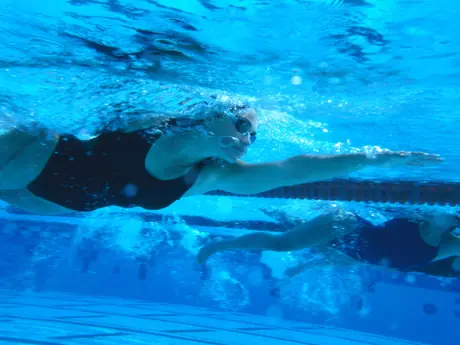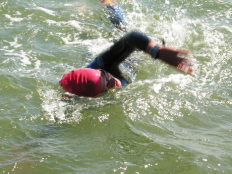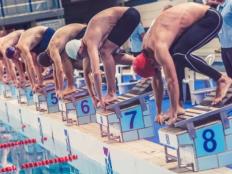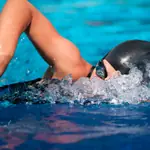
Breathing during freestyle is a funny thing. When you are good at it, it's hard to articulate exactly why it works—it just does. When you're not, it's all you think about, and it makes swimming mind-numbingly difficult to boot.
Consider this: within one cycle of freestyle, a swimmer is required to precisely complete upward of 15 distinct movements within the span of two strokes. As good as most athletes are at multitasking, that's still a very complex series of movements within a very short period of time.
This complexity of movement can lead to a lot of different kinds of problems with the way a swimmer breathes and swims. One of the most common problems that we work with triathletes on at SwimLabs involves swimmers who breathe by rolling onto their side. In the swimming world, this is known as an "over-rotated" or "unbalanced" breath.
More: 4 Steps to Easy Breathing in Freestyle
Over-rotating during the breath has one colossal hitch: The human body is just not built to be able to float in this position. The next time you go to the pool, try this little experiment to see why: Float on your side with your head in a breathing position. Most likely, this will cause you to sink very quickly, just as you would if you over-rotated during your breath. This makes it much more difficult to consistently use good technique as you swim.
Fixing this problem requires understanding a little bit about the way body rotation should work when swimming freestyle. In the swimming world, freestyle is known as a "long axis" stroke, meaning that a swimmer's body rotates from side to side along the line of their spine as their arms stroke through the water. Typically, most swimmers rotate somewhere between 20 to 45 degrees relative to the surface. There is also a general rule of thumb that says that if a swimmer rotates more than 45 degrees, they will sink.
Maintaining balance during the breath is all about consistency. Ideally, your rotation during breathing and non-breathing strokes should be exactly the same. This makes it easier for you to keep you body balanced in the water. This will help you reduce your stroke count, leading to more efficient (and usually faster) swims.
To be able to do this requires that you do two things: 1. You need to initiate the breathing movement early in the stroke, and 2. You need to ensure that your body never rotates past 45 degrees in the water.
I don't know about you, but I don't carry a protractor with me into the pool, and even if I did, I have no idea how I would measure my rotation as I swim. Luckily, It's not as important for me to know exactly how much I rotate as it is to know that I don't rotate to far, and "tummy drill" is a great drill to use that provides that exact information.
- 1
- of
- 2
About the Author
SwimLabs
Get ACTIVE on the Go


Meet Mobile
Swim smarter: heats, lane assignments and real-time results in the palm of your hand.
Available for iOS | Android








Discuss This Article